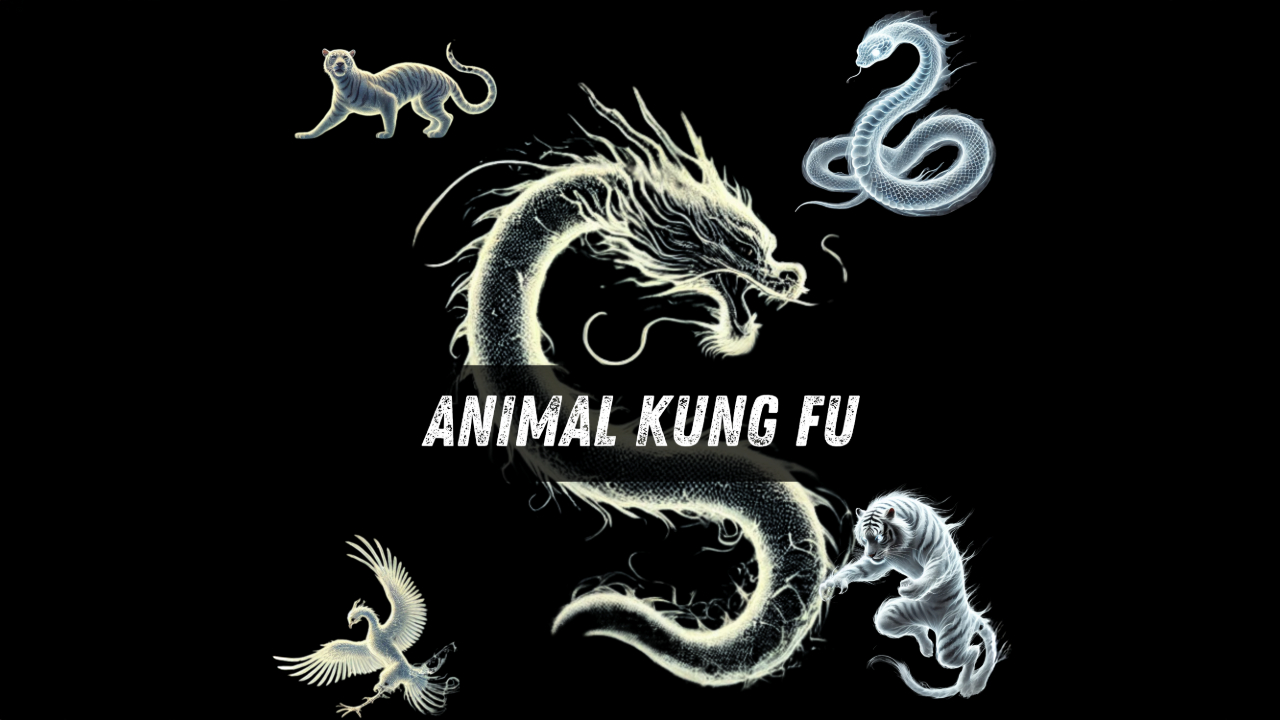Animal Energies
Animal styles have fascinated martial artists and movie lovers alike. From the legendary Shaolin Five Animals to Jackie Chan's playful adaptations, these styles embody more than just movement—they represent a more profound philosophy of Power, adaptability, and energy.

Yet, while these styles look incredible on screen, many wonder: Are they realistic? Do they actually work? How did they develop?
In this article, we'll uncover the history of animal styles in martial arts and Qigong, their true purpose, and how you can use them to enhance your training.
Fact vs. Fiction in Movies

Jackie Chan popularized animal styles in films like Snake in the Eagle's Shadow. Still, many cinematic versions are rooted in Peking Opera, where the movements are dramatic and exaggerated rather than purely functional.
Some moves depicted in the movies do work when understood correctly.
However, Many actors weren't experts in these styles, leading to creative liberties and fictional adaptations (e.g., Jackie Chan's Cat and Hyena styles).

Jackie Chan's "Snake Under the Eagle's Shadow"
|
The Origins of Animal Styles
A History Rooted in Nature
While referencing animals for movement isn't unique to Asia, the development of animal styles in Kung Fu can be traced back to the Han Dynasty (202 BC—220 AD).
Shaolin Monks meticulously observed animal behaviors, movements, and strengths and integrated them into their fighting techniques.
The idea was to harness their Power and overcome human limitations. This concept would later shape martial arts across Asia.
Breaking Down the Animal Styles (Key Insights & Practical Use)
Some martial arts focus entirely on a single animal, while others blend multiple animals into a system.
The Five Core Shaolin Animals
The Shaolin system famously categorizes animal styles into five key archetypes, each representing a unique energy, approach, and combat strategy:
Famous Animal Styles
There are even whole martial arts systems based on a single animal, while others are combinations of animals. Single-animal styles include Wing Chun(Crane Style), Eagle Claw, Praying Mantis, and Monkey(Pek Kwar). Combination styles include Taichi (Snake and Crayne), Hung Gar (Tiger Crane), or even Shaolin, which has all of the Animals Represented in the style.
Shaolin Famously groups five animal styles:
Snake 🐍, Crane 🦢, Leopard 🐆, Tiger 🐅, and Dragon 🐉.
Lessor Known Animals
Turtle, Deer, goose, and Bear Features in Qigong Sets, like the 5 Animal Frolics and some TaiChi concepts, are uncommon and seldom referenced.

Subscribe to access exclusive insights!
Subscriber-Only Content (Free Subscribers Get Access After Logging In)

![Jackie Chan vs Hwang Jang Lee- Snake In The Eagles Shadow End Fight [HQ].m4v Jackie Chan vs Hwang Jang Lee- Snake In The Eagles Shadow End Fight [HQ].m4v](https://kajabi-storefronts-production.kajabi-cdn.com/kajabi-storefronts-production/media_embed_thumbnails/thumbnail-732e717c211539699e6ffe709a38c24d1f742e8c3d3b86ff7e48d68d79350a76.jpg)




